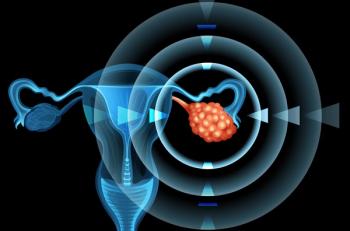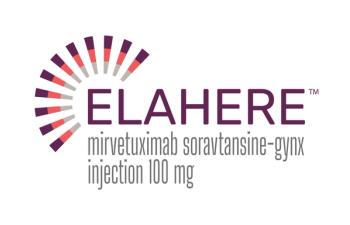
Results of the phase 3 PRIME study showed that treatment with niraparib with an individualized starting dose significantly extended progression-free survival (PFS) and reduced the risk of disease progression or death by 55% compared with placebo.

What We’re Reading: Drug Shortage Impacts Cancer Treatment; Consequences for Medicaid Money Misuse; Helping Children With Mental Illness

Results of the phase 3 PRIME study showed that treatment with niraparib with an individualized starting dose significantly extended progression-free survival (PFS) and reduced the risk of disease progression or death by 55% compared with placebo.

Currently, there is no established standard of care treatment for ovarian squamous cell carcinoma (SCC).

Racial minority patients and low socioeconomic status patients tended to face the most barriers.

Investigators looked at both primary and metastatic tumors and found correlations between characteristics and patient outcomes.

Most cases of high-grade serous ovarian cancer are not diagnosed until the disease has reached an advanced stage.

The findings come amidst growing use of the treatment approach.

In addition to a fear of cancer recurrence, patients said feeling isolated was also a challenge associated with having ovarian cancer.

Rates of next-generation sequencing (NGS) more than doubled once a nurse navigation program was implemented.

Outcomes for patients with this form of the disease are poor and treatment options are limited.

This interview with the lead investigator of the MIRASOL trial, which was presented at the 2023 American Society of Clinical Oncology (ASCO) Annual Meeting, will appear with coverage of ASCO in the upcoming issue of Evidence-Based Oncology.

Latina women at risk of hereditary breast and ovarian cancer are less likely to be referred for genetic counseling and testing.

Following safety reports of bleeding events after treatment with upifitamab rilsodotin among patients with platinum-sensitive ovarian cancer, the FDA places a partial clinical hold on enrollment for the UP-NEXT and UPGRADE-A trials.

The confirmatory trial showed limited side effects relative to physician's choice of chemotherapy.

The antibody drug conjugate received FDA approval in November 2022.


In addition to the drug approval, the FDA approved a companion diagnostic to be used to identify patients who are eligible to receive the treatment.

Patients with ovarian cancer who lived within 10 miles of Kansas’s only National Cancer Institute–designated cancer center, and those of a non-White race, were shown to have less of a survival advantage.

Whitney Goldsberry, MD, clinician at the University of Alabama at Birmingham Hospital and fellow at the UAB Division of Gynecologic Oncology, gives her insight into the future of PARP inhibitors in ovarian cancer treatment.

An investigation of 24 women from the United Kingdom’s PROTECTOR trial has revealed that their concerns toward cancer risk and menopause affect their choice of surgery as treatment for ovarian cancer.

Whitney Goldsberry, MD, fellow at the University of Alabama's Division of Gynecologic Oncology, discusses findings from her and colleagues' recent analysis of cost-sharing trends for PARP inhibitors in ovarian cancer treatment.

Researchers from MD Anderson Cancer Center found that laparoscopy cost more upfront but eliminated wasteful treatment decisions.

Recent results with adavosertib in ovarian cancer could signal future positive results, given the number of trials using the targeted therapy with the PARP inhibitor olaparib.

Lauren M. Corduck, who turned a diagnosis of ovarian cancer into a crusade to educate others with similar genetic mutations, died on December 24, 2020. She was 49.

Certain elderly women with ovarian cancer might benefit from aggressive treatment methods, a study recently published in Annals of Surgical Oncology found.

Panel testing for genetic variants linked to more cancers is cost-effective than just testing or BRCA1/2 mutations, says a clinical director for a women's health company.

259 Prospect Plains Rd, Bldg H
Cranbury, NJ 08512
© 2025 MJH Life Sciences®
All rights reserved.
